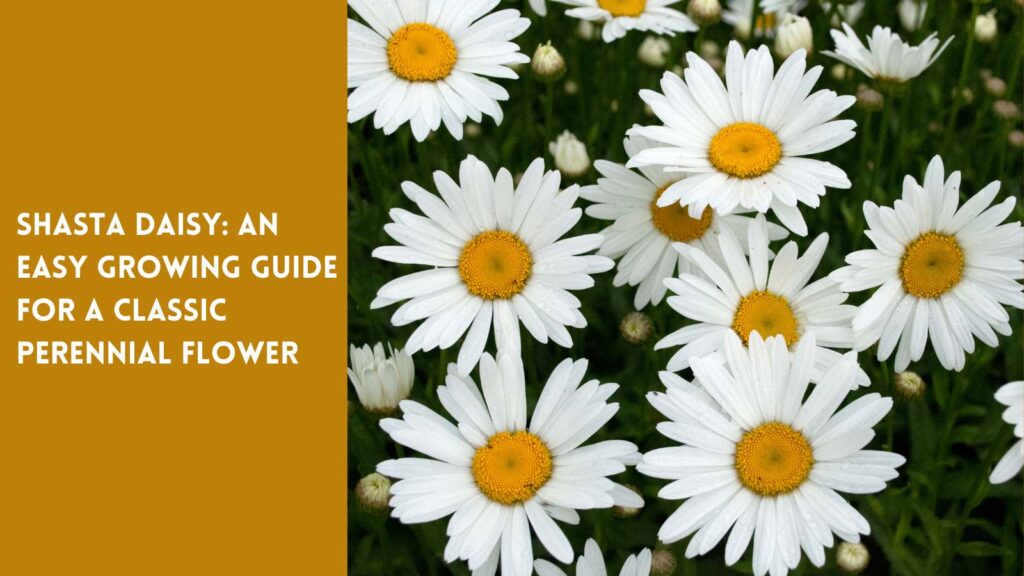Last Updated on: 10th September 2024, 08:18 am
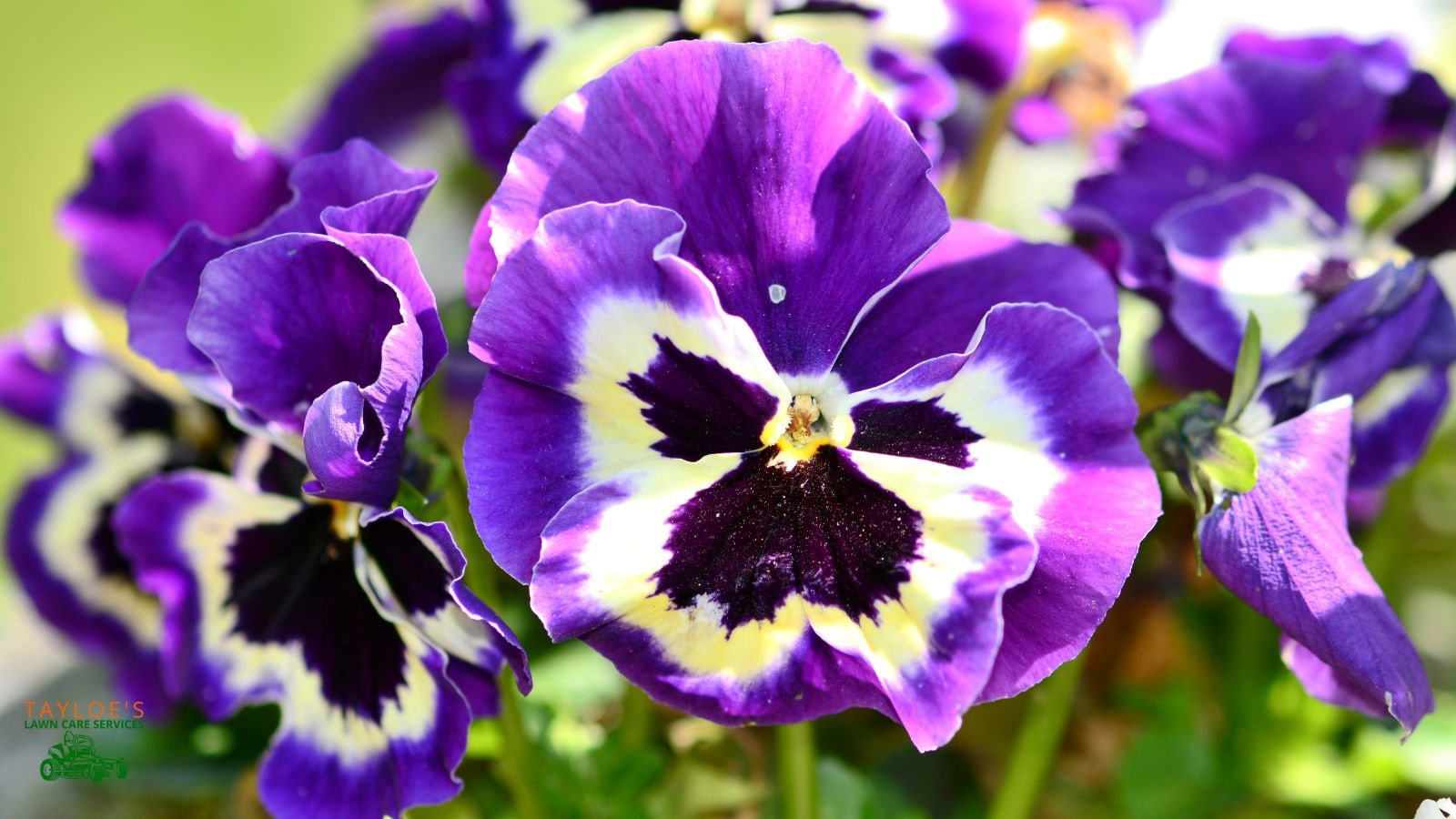
Successfully plant pansy flowers for color from fall to early spring
It’s fall. Now that the summer heat is gone, it’s time to plant pansies. Adding these to your garden beds is a great way to add a vibrant pop of life and color after your summer annuals have faded away. Fall-planted pansies bloom until the early spring in our region – a long blooming season!
It’s easy to see why so many of Tayloe’s Lawn Care Services clients ask us to install pansies in their fall gardens, raised beds, and container gardens. Pansies are hardy and beautiful to look at when the cooler temperatures have arrived.
I invite you to read on. This post will explain everything you need to know about growing and caring for pansies, an NC gardeners’ favorite winter annual.
About Pansies
Pansies are an annual viola hybrid (Viola x wittrockiana) when grown in eastern NC. They come in a variety of colors, including blue, purple, orange, red, pink, and black and white.
British growers began hybridizing wild violas (Viola tricolor) to create modern pansies, which are best known for their larger, more colorful blooms. This effort was led by growers like William Thompson, who worked to develop larger blooms and distinct color patterns in pansies, particularly their signature “faces.” Over time, breeders in other countries, including France, Belgium, and the U.S., further enhanced pansies’ colors and size
Pansies are best planted just before the first fall frost. They prefer soil temperatures between 40 and 60 degrees Fahrenheit and can last from winter to spring in warm regions. Pansies are a great option for container gardens and can also be grown in garden beds.
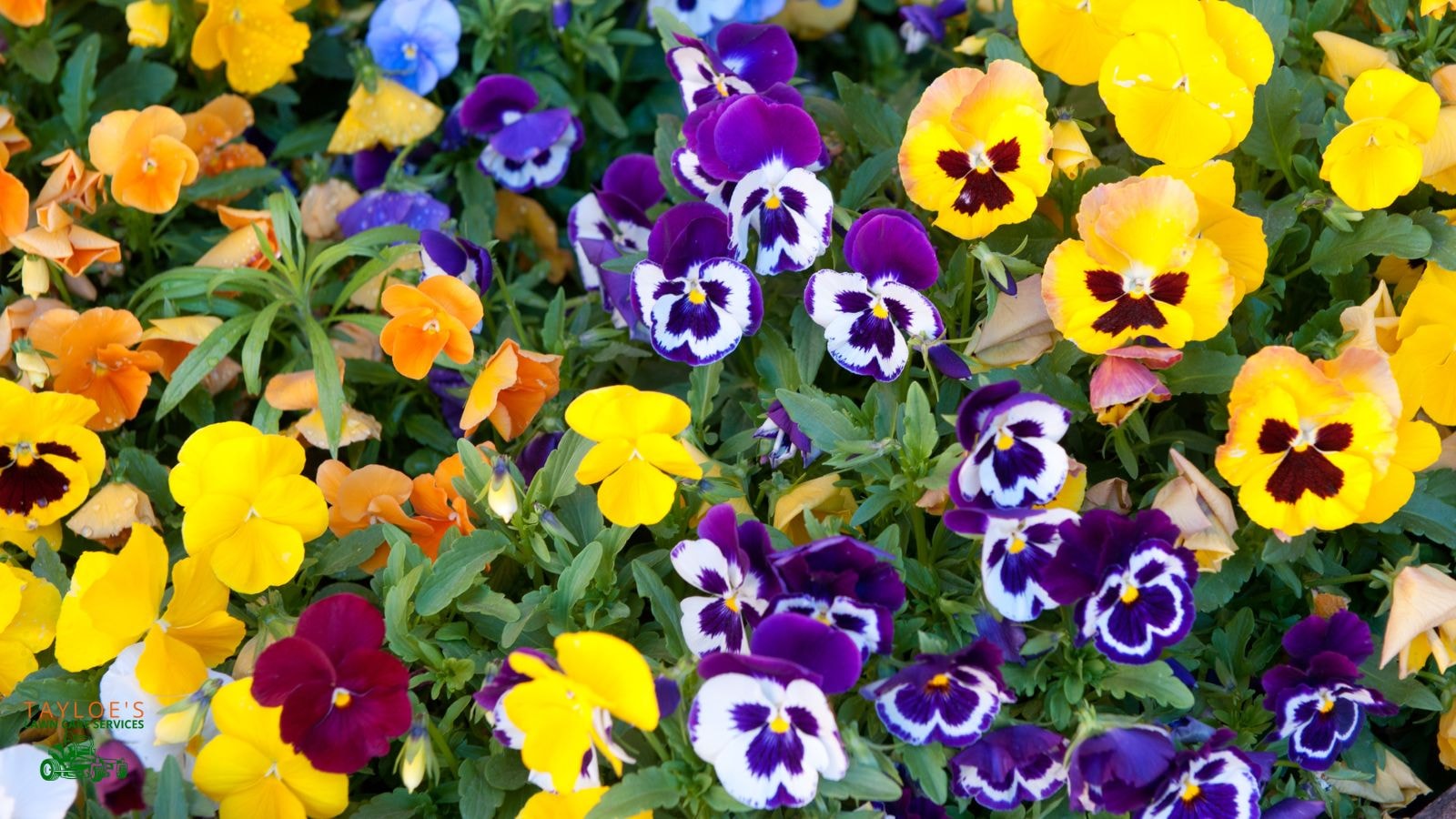
What are Pansies?
Pansies are flowers with upturned faces and overlapping petals. They love cool weather and – as mentioned earlier – pansies are most famous for bringing fresh color to the garden during cold weather.
Bonus: They’re also edible, adding color to salads, drinks, and cakes. Pansies are a great choice for growing in containers and borders and can be used as ground cover.
Choosing the Right Pansy Plants
When buying plants from the garden center, choose pansies with stocky, bushy growth and plenty of buds. Select plants from the same series for a cohesive monochromatic look, or choose a mix of colors for a more varied display.
You will not find a shortage of beautiful colors of pansies. They are lovely when mixed with evergreen plants in your garden beds.
Get creative with your pansies and enjoy all they have to offer you. Just picture those pops of color tucked into pine boughs for the holiday season!
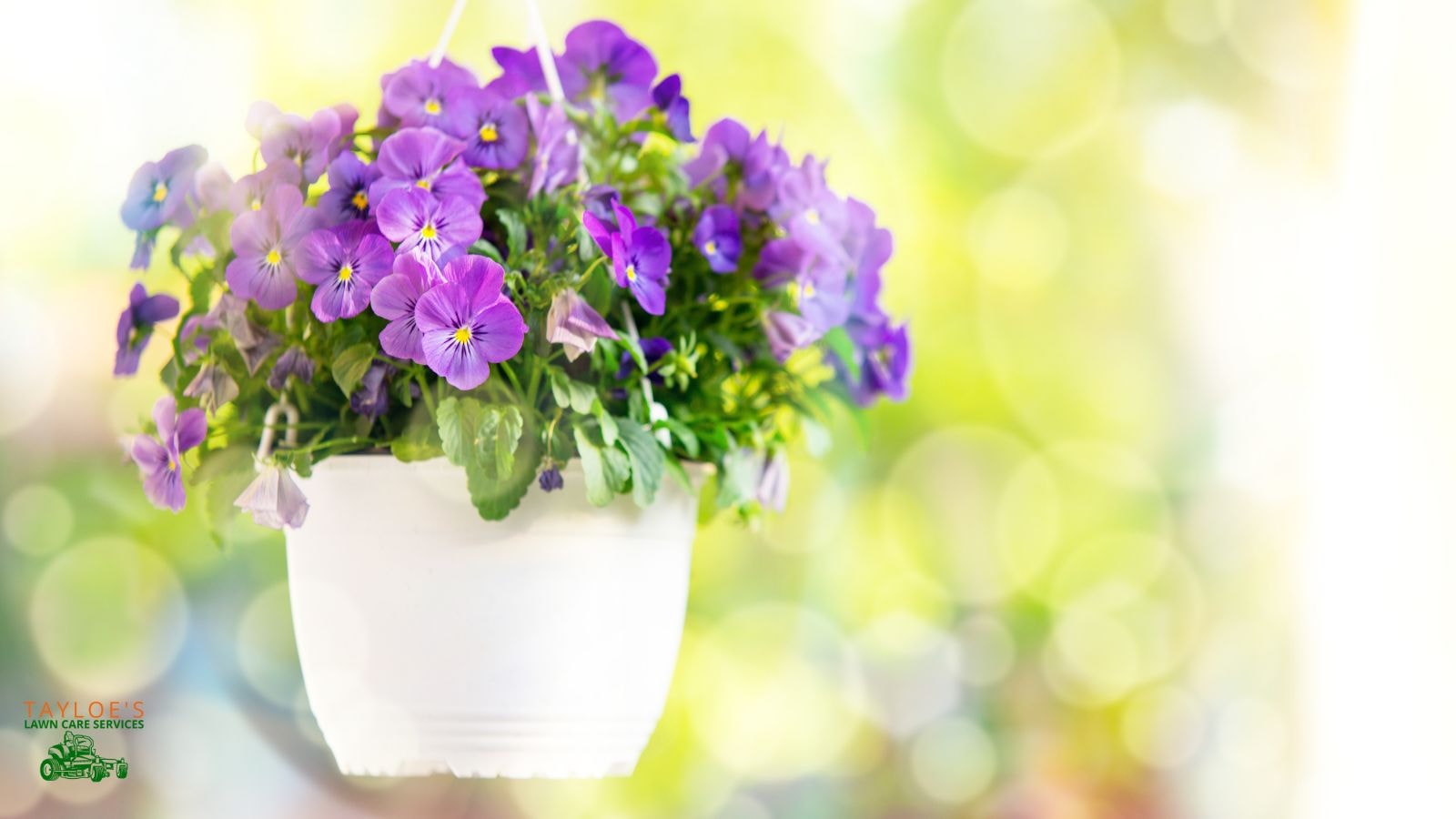
Preparing the Planting Site for Your Pansies
Pansies can be used as borders or in larger masses. They pair well with spring bulbs like tulips or hyacinth, providing a colorful bridge to summer flowers. Not sure where you put those sunny yellow daffodils?
Make a guesstimate. Then, just pull back the soil and take a quick peek – look for the bulb foliage.
Avoid planting pansies in areas with too much afternoon shade, as they need plenty of sunshine to produce new flowers. Besides that, too much shade can also make plants leggy.
Where to Grow Pansies
Pansies can be planted in early spring or fall and grown in containers or raised beds. If you are expecting a cold snap, you can cover them with pine straw mulch for a warm layer to protect the root system—especially if you have planted them in a container or pot.
They prefer full sun to partial shade and should be spaced a few inches apart. Pansies can be grown in all parts of the United States and produce their best flowers in the late fall season here in eastern North Carolina.
Planting and Growing Pansies
Plant pansies at the same depth as their nursery pot in well-draining soil, leaving 6 to 12 inches between each plant. Avoid crowding plants in containers; add just three to four pansy plants to a 10- to 12-inch pot. This spacing will allow adequate air circulation to avoid disease.
Repotting pansies in masses for the most spectacular display, either in pots, window boxes, or the ground, will create beautiful, seasonal décor.
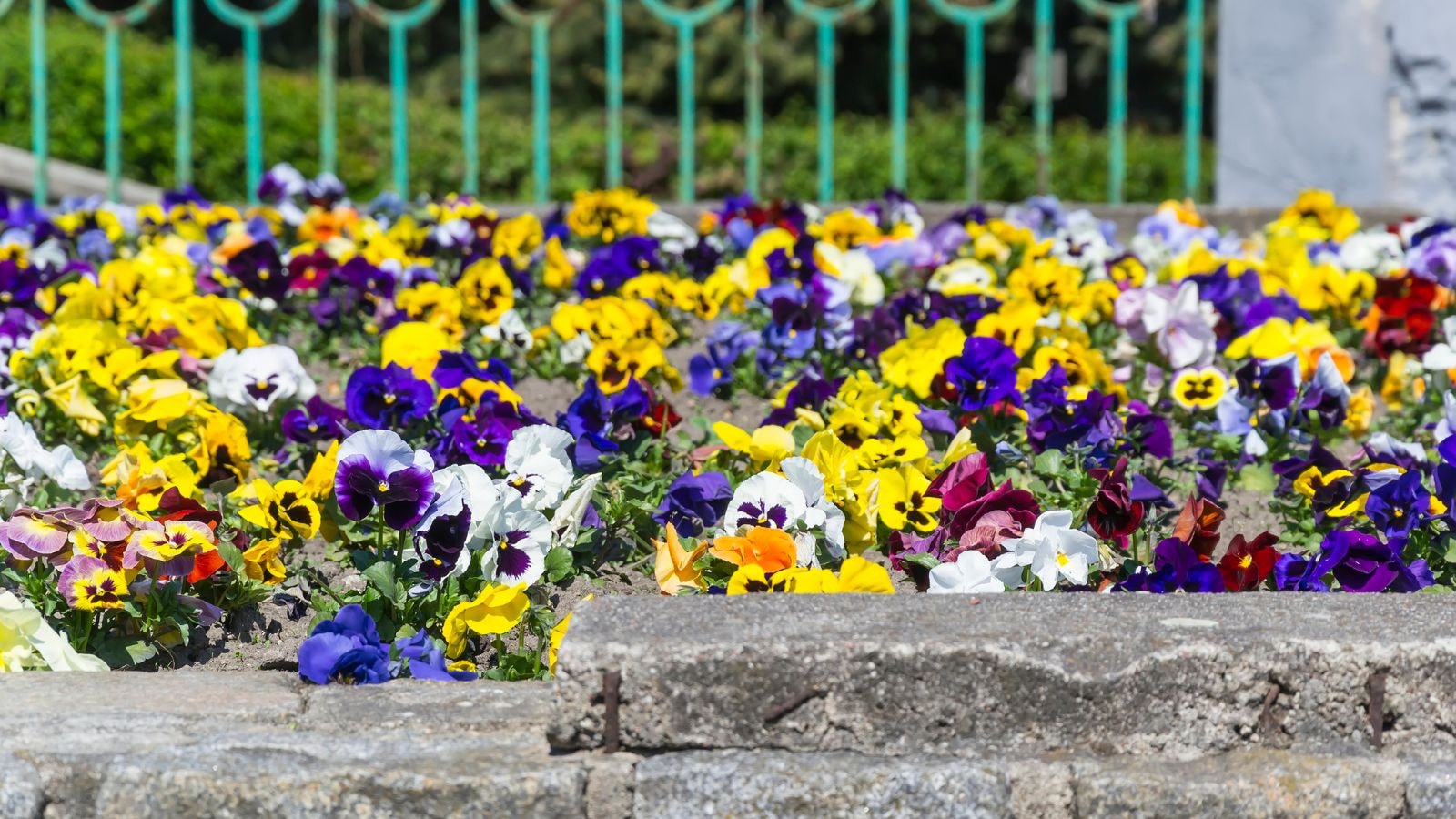
Soil and Water Requirements for These Cool Season Flowers
Pansies prefer moist, well-drained, slightly acidic soil (pH 5.6-6.0). Before planting, add organic matter like compost or a 5-10-5 liquid fertilizer to the soil.
Soil
Pansies prefer loose, rich soil with a slightly acidic pH (6.0 to 6.2). They are heavy feeders and will benefit from amending the soil with mushroom compost or peat moss. Avoid planting pansies in heavy soil, as they have shallow roots and prefer well-draining soil.
Watering Pansies
Pansies prefer well-drained soil, but you will need to work a little to keep it moist. Be careful—if you make it too soggy, you’ll have crown rot or root rot. The panties planted will benefit from watering regularly. Use containers with drainage holes or plant them in the ground with well-draining soil to prevent waterlogged soil.
Fertilizing and Pruning
After being established for the fall season, use a slow-release fertilizer and repot the pansies if they become root bound.
While pansies appreciate some fertilizer, overdoing it won’t make more pansies (like some people think). Instead, it will lead to leggy growth. Use a balanced fertilizer according to the product label’s directions, and consider foliar feeding for optimal growth. Pansies can also become leggy and straggly if not pruned regularly.
Fertilizer
Add a granular, slow-release 5-10-5 fertilizer to the soil before planting.Avoid formulations with high levels of nitrogen, as this can lead to soft leaves and rot.Apply fertilizer again in the late fall and early spring.
Pruning
Trim back pansy blooms as they begin to fade to encourage the plant to produce more blooms. Cut back leggy stems to promote bushy growth and prevent the plant from becoming too leggy.Deadhead spent flowers to encourage the plant to produce more blooms.
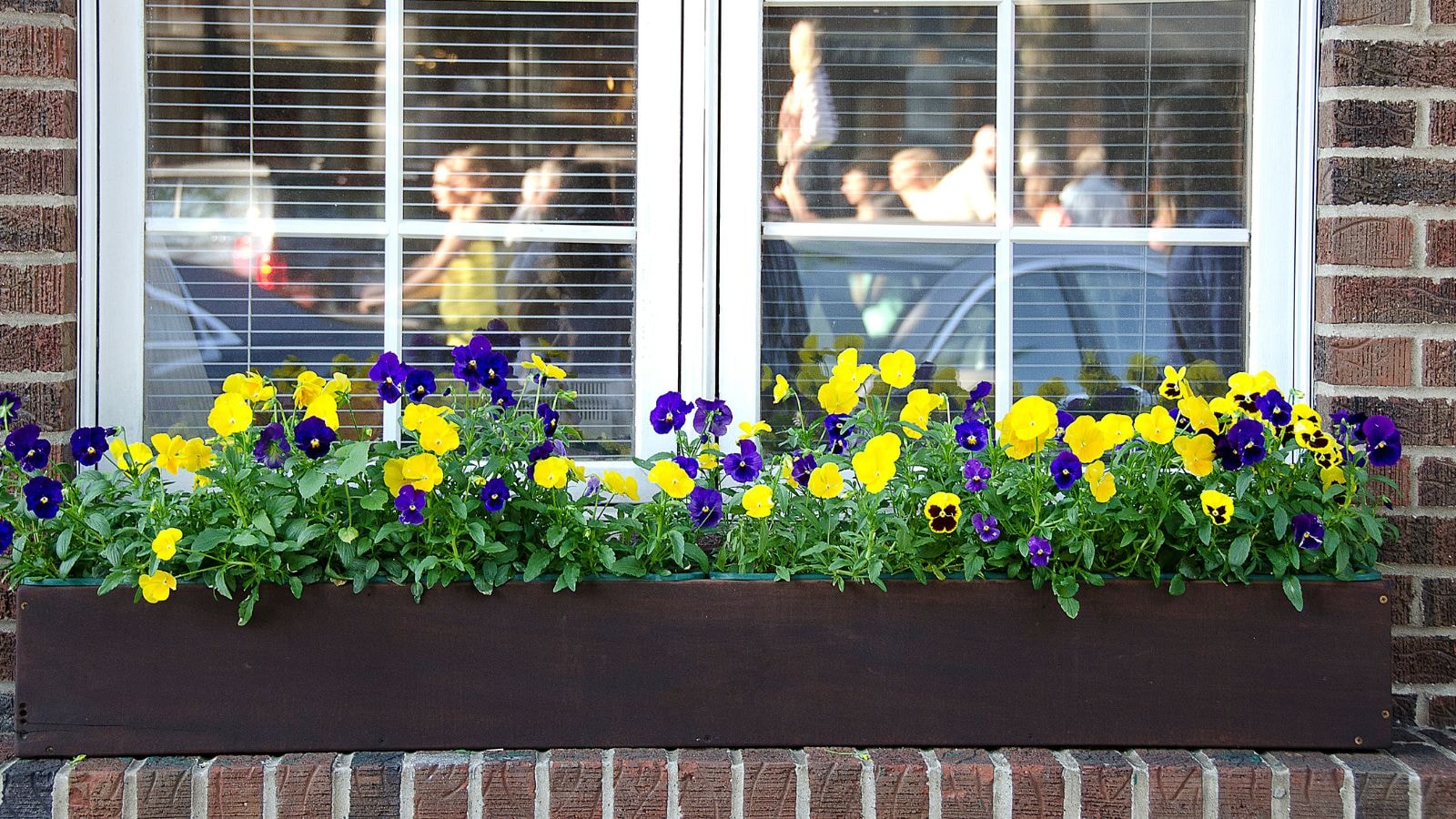
Common Pests and Diseases
Pests are not a significant issue with pansies, but slugs and snails may be attracted to the plants. Aphids and spider mites can also occur occasionally. Healthy plants and good growing conditions can minimize pest problems.
Pests
Leafhoppers, aphids, and spider mites can attack pansies. To control these pests, use malathion or dicofol sprays or dusts
Before you plant pansies (or any fall annual), clean out the garden bed to remove old plants and debris that these bugs take shelter in.
Diseases
Pansies are susceptible to fungus diseases, including anthracnose, gray mold, leaf spot, and rust. Use zineb sprays or dusts to control these diseases. Leaf diseases, particularly mildew, are common in pansies.
Propagating Pansies
Pansies can be propagated from seed or through division. Stem cuttings are not recommended for the home gardener. Many variables go into the process when you propagate pansies. Any mistake means you will not have vigorous pansy plants to enjoy. Instead, you will have leggy plants with small blooms.
Swap out your summer white landscaping fabric (if you have it) for dark brown or black to create warmer zones in your garden. It will help you have strong pansy plants on the coldest days.
Growing from Pansy Seeds
It’s possible to gather seed pods from pansies in your garden, but be aware that the seeds will probably not produce stronger plants. Purchasing high-quality seeds and growing them in seed starting mix will increase the odds you’ll have good results. Plant seeds indoors in late summer for fall blooms or late winter for spring season blossoms.
Division of Pansy Plants
If you mass plantings get too big, you can divide pansies in the fall, but you should do this task before the first frost. Allow the divided pansies to recover in a cold frame for a few weeks before moving them to the desired location. Divide pansies in the spring or fall, ensuring each section has at least one growing point.
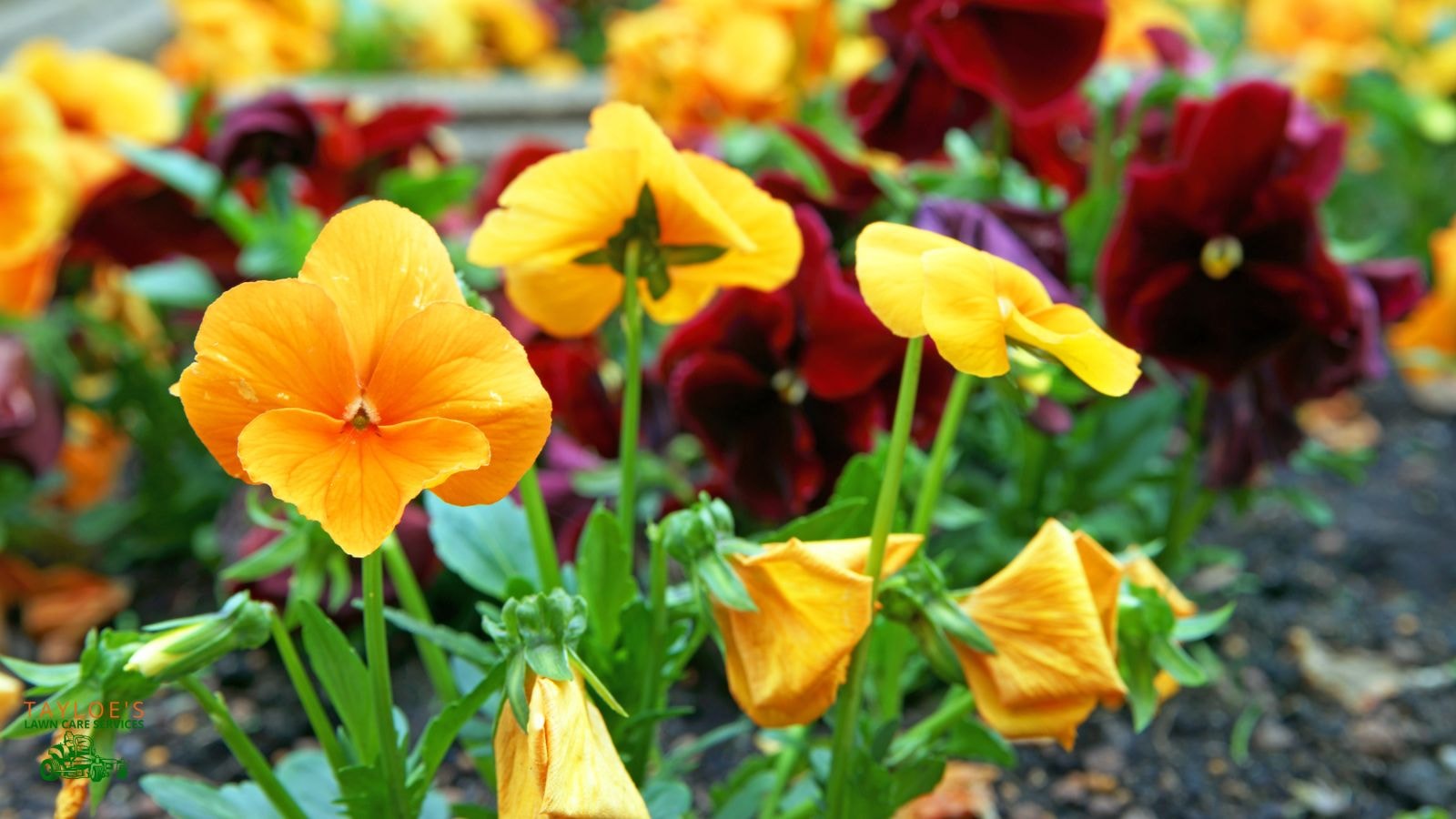
Plant Pansies for Stunning Cold Weather Color in the Garden
Growing pansies in warmer regions is an excellent way to add color and texture to the garden from fall until they stop blooming when spring arrives. Put them in the same bed as some evergreens for splashes of color that will break the winter blues.
Pansies take a little effort, including:
Making sure you plant them a few inches apart to allow for growth and airflow
Ensuring that the pansies receive some full sun to produce new flowers
Keeping the soil dampened but not waterlogged
Covering pansies lightly with pinestraw or peat moss before a particularly cold spell (then uncovering after!)
Fertilizing every so often.
With those easy care tips, you can grow pansies and enjoy all they have to offer. So what are you waiting for? It’s time to plant pansies!
Author Profile

- Maureen Abuor
- Maureen Abuor is a professional content marketing strategist and SEO strategist, with particular knowlege of creating landscaping and gardening content that informs and delights her audience. When she's not working, she's a busy mother of three precious little ones and child of God.
Latest entries
 Lawn CareApril 29, 2025Best shady area grass seed for Eastern NC
Lawn CareApril 29, 2025Best shady area grass seed for Eastern NC GardeningApril 15, 2025How do I make organic soil for the garden?
GardeningApril 15, 2025How do I make organic soil for the garden? Flower GardenMarch 7, 2025What are wave petunias?
Flower GardenMarch 7, 2025What are wave petunias? Flower GardenMarch 3, 202520 Full-sun annuals for your spring and summer garden
Flower GardenMarch 3, 202520 Full-sun annuals for your spring and summer garden






